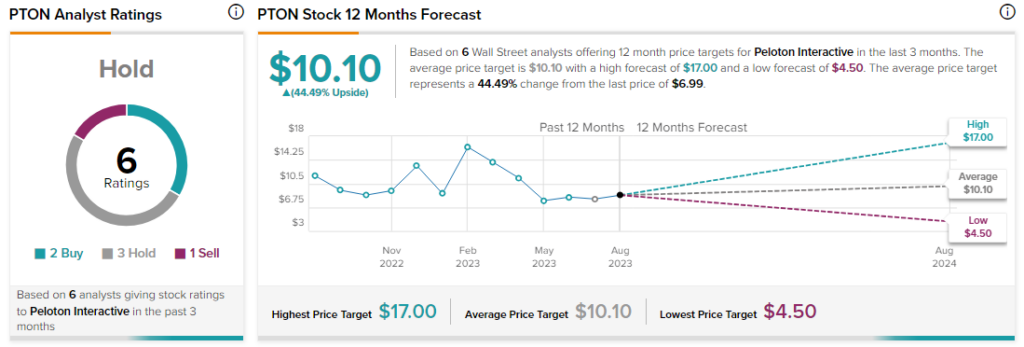Exercise equipment company, Peloton Interactive (NASDAQ: PTON) was on a downslide in trading as the company’s fiscal first-quarter outlook fell short of estimates. Looking forward, total revenues in Q1 are estimated to be between $580 million and $600 million, a decline of 4% year-over-year while adjusted EBITDA is projected to be in the range of a loss of $20 million to a loss of $10 million. For reference, analysts had projected Q1 revenues of $647 million. The company expects its paid connected fitness subscriptions at the end of fiscal Q1 to be in the range of 2.95 to 2.96 million, up by 1% year-over-year.
In the fiscal fourth quarter, the company’s revenues slid by 5% year-over-year to $642.1 million but exceeded consensus estimates of $641.01 million.
Peloton’s memberships dropped by 5% year-over-year to 6.5 million members and at the end of Q4, the company had 3.078 million members. The average net monthly connected fitness churn stood at 1.4% in Q4. The company added that the cost of the May recall of its original Peloton Bike “substantially exceeded our initial expectations” leading to the accrual of additional costs of $40 million. Moreover, an estimated 15,000 to 20,000 of its impacted members “elected to pause their monthly subscriptions in Q4 pending the receipt of a replacement seat post.”
The company’s losses narrowed to a loss of $0.68 per share in Q4 as compared to a loss of $3.72 in the same period last year. However, this loss was still wider than analysts’ estimates of a loss of $0.40 per share. In addition, Peloton saw a positive pro forma free cash flow of $1 million, excluding the impact of losing its court case against Dish Network (DISH).
However, Peloton’s CEO Barry McCarthy stated in its letter to shareholders that this pro-forma cash flow was “barely positive and only positive on a pro-forma basis, which was not the goal we set for the business. Nevertheless, we achieved an important milestone in rightsizing the cost structure of the business.”

Analysts remain sidelined about PTON stock with a Hold consensus rating based on two Buys, three Holds, and one Sell.
















